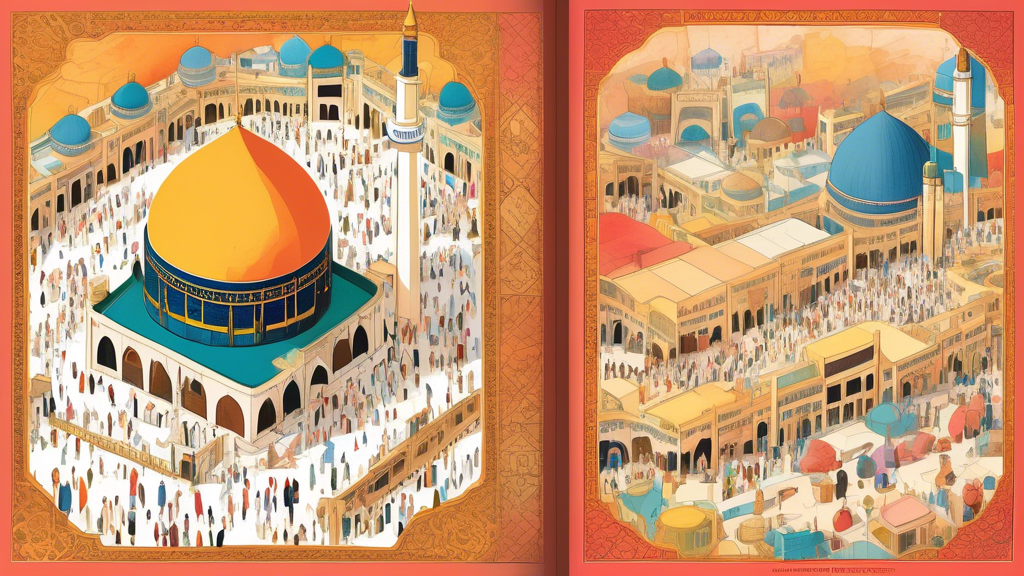Introduction to Performing Umrah
Umrah, often referred to as the ‘lesser pilgrimage’ or ‘minor pilgrimage’, is a highly revered Islamic ritual performed by Muslims from around the world. Unlike Hajj, which has specific dates according to the Islamic lunar calendar, Umrah can be performed at any time of the year. This spiritual journey involves a series of rituals done in and around Mecca, which are symbolic acts of worship and devotion towards Allah. The following guide provides a comprehensive, step-by-step look at how to perform Umrah, designed to assist pilgrims in fulfilling this sacred practice with diligence and peace of mind.
Preparing for Umrah
1. Pre-Umrah Arrangements
Before embarking on your spiritual journey, there are several practical arrangements to be made:
- Visa and Passport: Ensure your passport is valid for at least 6 months from the date of travel, and apply for a Umrah visa through an authorized service agent.
- Accommodation and Transport: Book your flights, hotels, and transport options well in advance to ensure a hassle-free pilgrimage. Many choose to book with specialized travel agencies who provide all-inclusive Umrah packages.
- Health Preparations: Pilgrims are advised to perform a health check-up and get the necessary vaccinations before departing. It’s also important to carry a basic medical kit.
2. Spiritual and Mental Preparation
Umrah is not just a physical journey, but also a spiritual endeavor. Engaging in extra prayers, reading the Quran, and learning about the rituals of Umrah will spiritually prepare you and provide a more fulfilling experience.
The Rituals of Umrah
Step 1: Ihram
Upon deciding to undertake Umrah, a pilgrim enters into a state of Ihram. This involves:
- Purification: Perform Ghusl (full-body ritual purification).
- Dressing: Men must wear two white, unstitched cloths, and women should wear simple, modest clothing covering the entire body except for the face and hands.
- Intention (Niyyah): Then, at the Miqat (the designated point of pilgrimage), announce your intention to perform Umrah by reciting the Talbiyah prayer loudly
Step 2: Tawaf
The first ritual upon arriving in Mecca is to perform Tawaf, which involves circling the Kaaba seven times in a counterclockwise direction. Each circuit starts and ends at the Hajar al-Aswad (Black Stone), and it is preferable to touch or kiss the stone if possible, though not mandatory.
Step 3: Sa’i
After Tawaf, pilgrims perform Sa’i, a ritual walking between the hills of Safa and Marwah, located near the Kaaba. This is done seven times and commemorates the search for water by Hagar, the wife of Prophet Abraham, for her son Ishmael.
Step 4: Halq or Taqsir
To complete the Umrah, males must shave their heads (Halq), and females typically clip a small portion of their hair (Taqsir), symbolizing a sense of renewal and purity.
Concluding the Umrah
Once all the rituals are adequately performed, the pilgrim exits the state of Ihram and can resume their normal activities and dress. It is common to celebrate the completion of Umrah by visiting nearby holy sites, engaging in communal prayers, and performing acts of charity.
Final Thoughts and Tips
Umrah is a profoundly spiritual journey that requires physical stamina, spiritual concentration, and practical preparedness. It’s advisable to stay hydrated, maintain good nutrition, and exercise patience across all stages of Umrah. Remember, every step taken in these rituals holds great religious significance and is a step towards spiritual purification and redemption. Pilgrims should strive to maintain the purity gained from this sacred pilgrimage and integrate the lessons learned into their daily lives.
